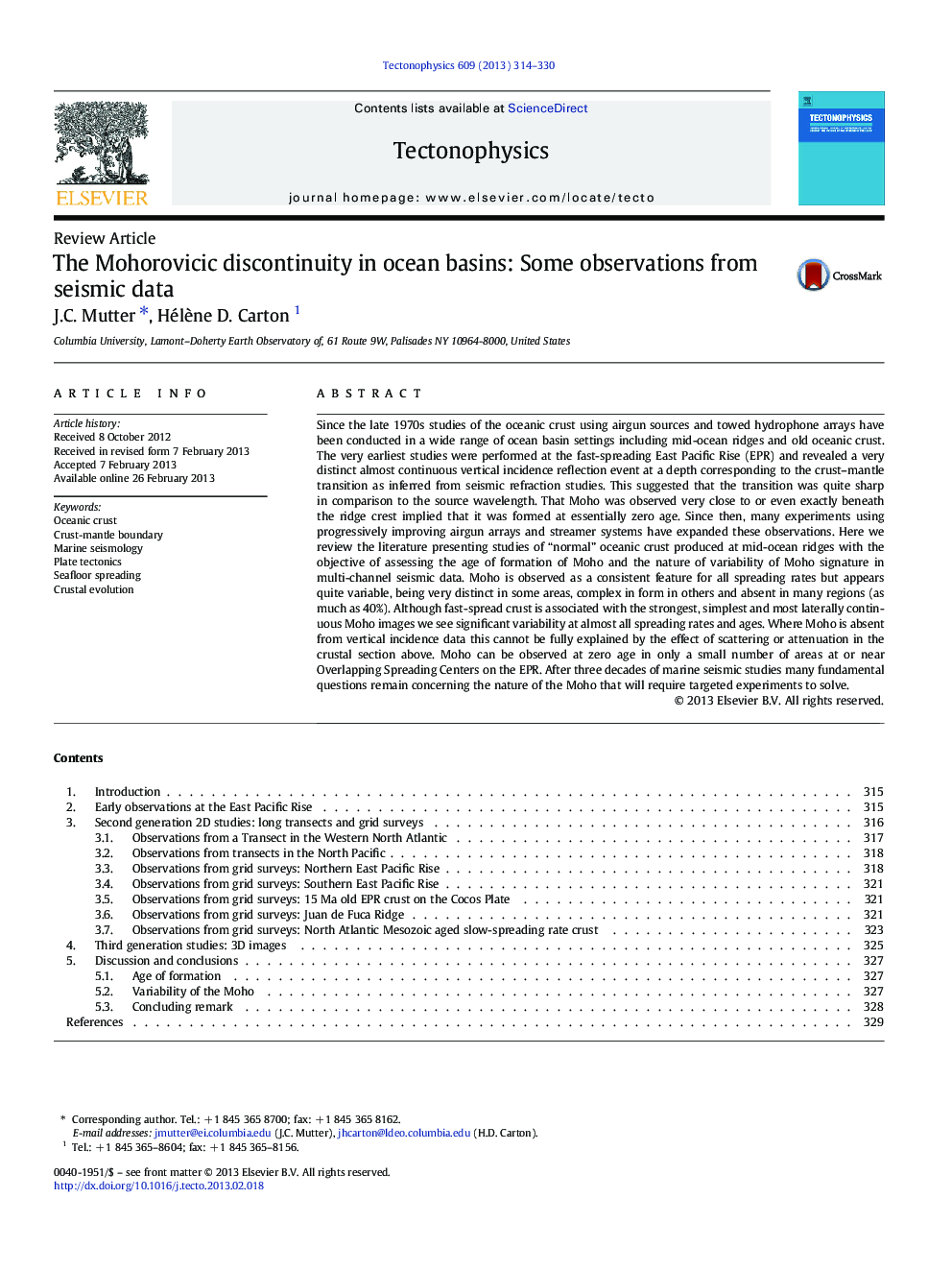| کد مقاله | کد نشریه | سال انتشار | مقاله انگلیسی | نسخه تمام متن |
|---|---|---|---|---|
| 6434085 | 1636778 | 2013 | 17 صفحه PDF | دانلود رایگان |
Since the late 1970s studies of the oceanic crust using airgun sources and towed hydrophone arrays have been conducted in a wide range of ocean basin settings including mid-ocean ridges and old oceanic crust. The very earliest studies were performed at the fast-spreading East Pacific Rise (EPR) and revealed a very distinct almost continuous vertical incidence reflection event at a depth corresponding to the crust-mantle transition as inferred from seismic refraction studies. This suggested that the transition was quite sharp in comparison to the source wavelength. That Moho was observed very close to or even exactly beneath the ridge crest implied that it was formed at essentially zero age. Since then, many experiments using progressively improving airgun arrays and streamer systems have expanded these observations. Here we review the literature presenting studies of “normal” oceanic crust produced at mid-ocean ridges with the objective of assessing the age of formation of Moho and the nature of variability of Moho signature in multi-channel seismic data. Moho is observed as a consistent feature for all spreading rates but appears quite variable, being very distinct in some areas, complex in form in others and absent in many regions (as much as 40%). Although fast-spread crust is associated with the strongest, simplest and most laterally continuous Moho images we see significant variability at almost all spreading rates and ages. Where Moho is absent from vertical incidence data this cannot be fully explained by the effect of scattering or attenuation in the crustal section above. Moho can be observed at zero age in only a small number of areas at or near Overlapping Spreading Centers on the EPR. After three decades of marine seismic studies many fundamental questions remain concerning the nature of the Moho that will require targeted experiments to solve.
⺠At what age is Moho created in oceanic crust? ⺠How variable is the crust mantle-boundary that gives rise to the Moho? ⺠Whether the crust is created at its full thickness immediately beneath the axis?
Journal: Tectonophysics - Volume 609, 8 December 2013, Pages 314-330
